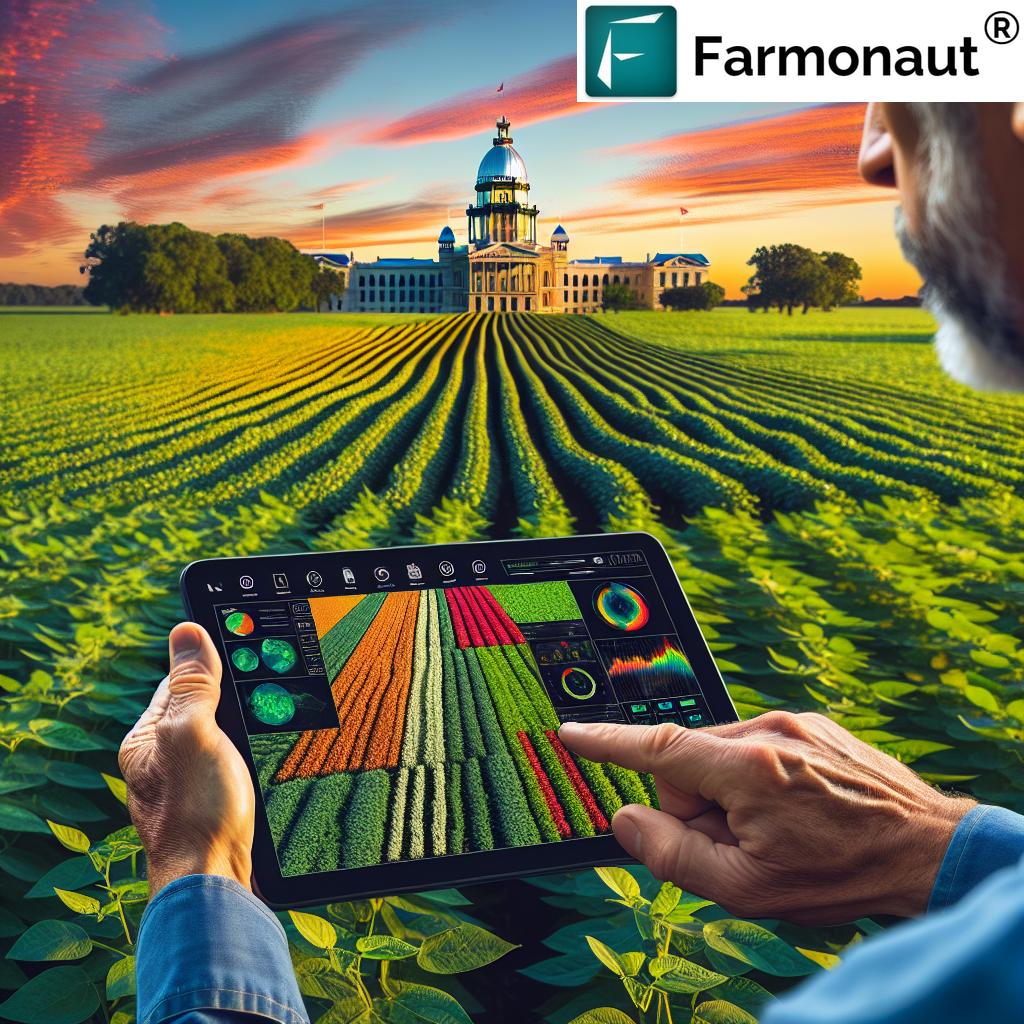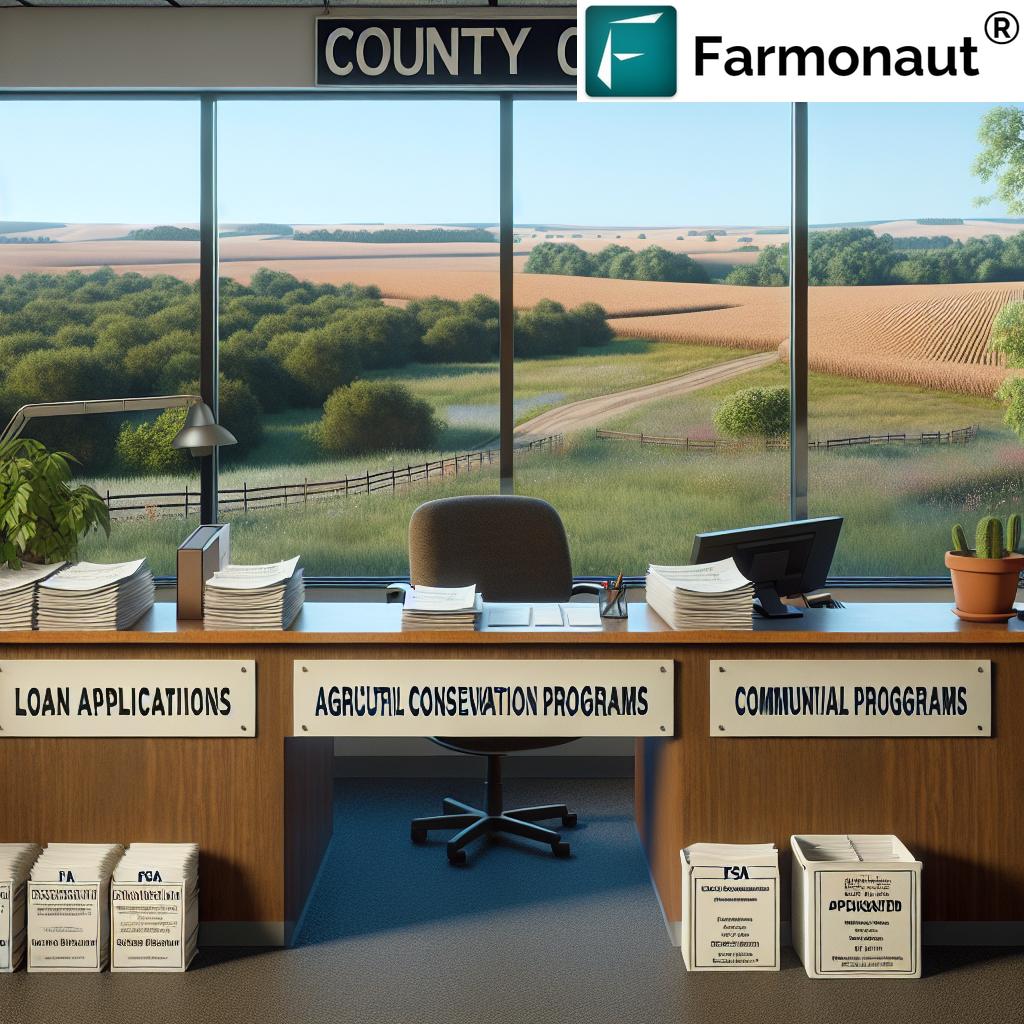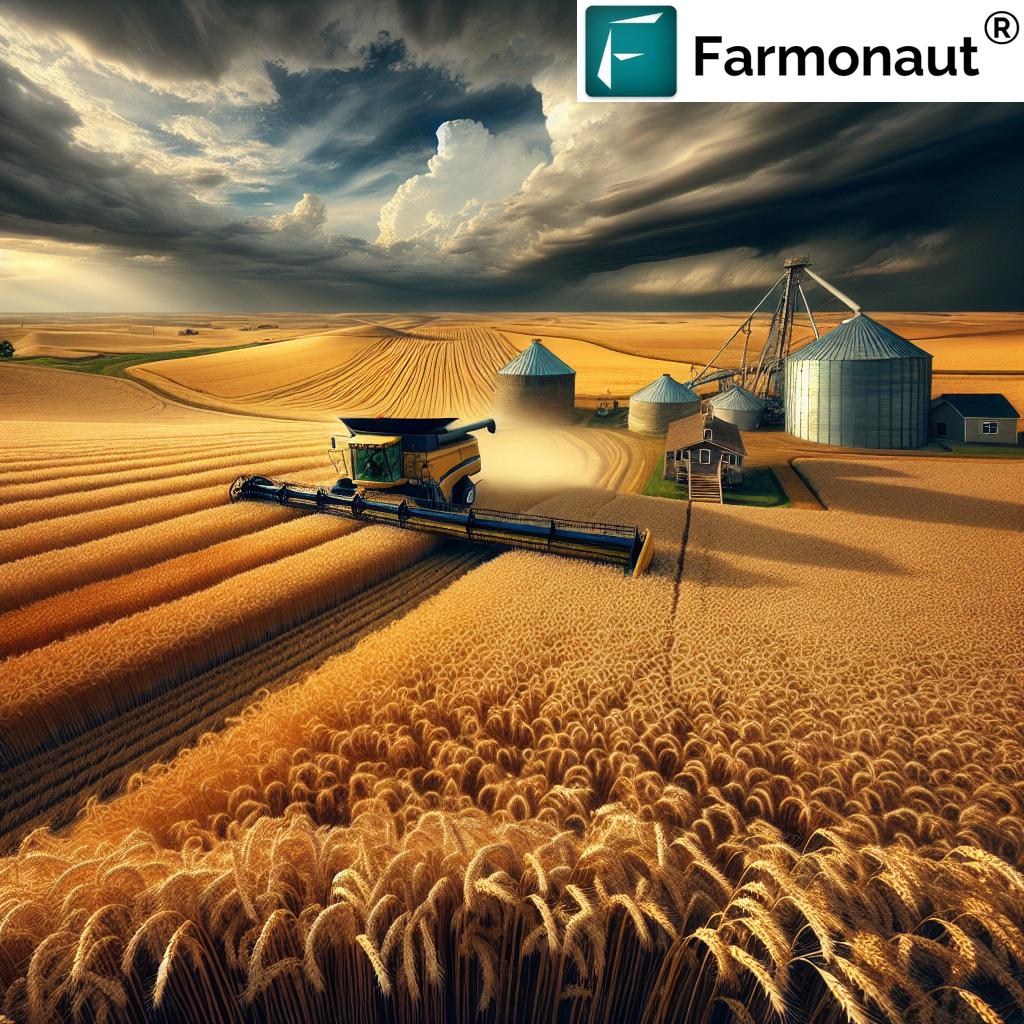Illinois Agriculture Facts 2025: Key Products, Jobs & Trends
“In 2025, Illinois farms are projected to produce over 2 billion bushels of corn, leading U.S. state output.”
Illinois agriculture stands as a powerhouse in American farming, renowned for its fertile soils and pivotal output in 2025. As the nation adapts to rapid industry shifts, Illinois continues to define modern agricultural trends and economic opportunity. This comprehensive article explores all essential facts about Illinois agriculture, including key products, job opportunities, sustainability measures, and the transformative role of technology and innovation. Whether you’re a farmer, policymaker, student, or ag industry professional, here’s everything you need to understand the evolving landscape of Illinois state agriculture in 2025.
Illinois Agriculture: A 2025 Snapshot
Long known as the “prairie state,” Illinois has stood as the cornerstone of American agriculture. In 2025, more than 26 million acres—around 75% of the state’s land area—remain dedicated to farming activities. The combination of central location, favorable climate, and highly fertile mollisol soils allows for the creation of ideal growing conditions for a diverse range of crops, livestock, and specialty products.
Illinois state agriculture is not just a regional player—it is a national leader. According to the latest statistics, the state ranks consistently among the top states for both corn and soybeans production, while its agriculture jobs Illinois sector anchors the broader economy. Trends in sustainable practices, market adaptations, and cutting-edge technologies continue to shape this evolving landscape.
Key Facts About Illinois Agriculture
- Over 75% of Illinois’ land area is used for agriculture, with more than 26 million acres devoted to farm production in 2025.
- Illinois farm production remains a vital component of both food supply chains and renewable energy initiatives, including ethanol biofuel.
- Corn and soybeans together comprise around 80%-85% of the state’s crop output, securing Illinois’ place as a national and global contributor.
- Illinois agriculture jobs (direct and indirect) are projected to exceed 600,000 in 2025, impacting rural & urban communities alike.
- Diverse range of products: Beyond major grains, Illinois supports wheat, hay, specialty crops like pumpkins (top national producer), melons, sweet corn, beef, pork, and dairy.
- Technological advancements, including AI, precision monitoring, and satellite technology, are transforming the Illinois agriculture landscape for the future.
“Illinois agriculture is expected to support more than 600,000 jobs statewide in 2025, reflecting broad economic impact.”
Illinois Agriculture Products: 2025 Highlights
Illinois state agriculture products form the backbone of both local communities and global trade. Let’s explore the current landscape—the facts about Illinois agriculture products that drive economies and innovation:
- Corn: In 2025, Illinois farms produce over 2 billion bushels of corn, easily retaining the state’s longstanding lead in corn output for the country. Corn is utilized for a myriad of purposes—food ingredients, livestock feed, and as a major component in the production of renewable biofuel (ethanol).
- Soybeans: Coming in close second, Illinois yields approximately 700 million bushels of soybeans per year. These beans serve as core ingredients for soy oil, meal, and various food products, as well as for export to international markets.
- Livestock: While crop farming dominates, Illinois also supports a robust livestock sector, notably pork (hogs), dairy, and beef. This sector remains critical for local food systems, exports, and agriculture jobs Illinois-wide.
- Wheat and Hay: Illinois’ production of wheat and hay contributes significantly to both food and livestock feed supplies. Wheat varieties grown in Illinois are primarily soft red winter wheat, feeding into bakery, snack, and export industries.
- Specialty Crops: The state is a leading national producer of pumpkins, and also grows melons, sweet corn, and various vegetables. These crops reflect the diversity and innovative management practices in Illinois farming.
The state’s ability to diversify and scale production is a testament to its fertile soils, favorable climate, and the continual evolution of precision technology and management practices.
2025 Illinois Agriculture Overview Table
| Agricultural Product | 2025 Estimated Production Volume | % of State Output | Estimated Employment | Key Sustainable Practices | 2025 Industry Trend |
|---|---|---|---|---|---|
| Corn | 2+ billion bushels | ~55% | 140,000+ | Minimum till, precision irrigation, integrated pest management, AI-driven soil analysis | Growth & Innovation |
| Soybeans | ~700 million bushels | ~30% | 85,000+ | Cover cropping, digital field monitoring, reduced fertilizer | Stable, Precision-Driven |
| Pork (Hogs) | ~2+ million head | ~6% | 35,000+ | Waste recovery, circular feed inputs, facility recycling | Growth, Export Focus |
| Dairy | Over 2 billion lbs of milk | ~4.5% | 18,000+ | Efficient water use, better feed, methane reduction | Stability, Tech Adoption |
| Wheat | 40+ million bushels | ~2.5% | 7,000+ | Crop rotation, advanced genetics | Renewed Demand |
| Specialty Crops (Pumpkins, Melons, Sweet Corn) | Top in U.S. for pumpkins; strong outputs for melons/sweet corn | ~2% | 8,000+ | Drip irrigation, organic controls, micro-farming | Niche Growth |
| Hay & Forage | 1.5+ million tons | ~1.5% | 6,000+ | Rotational grazing, drought-tolerant species | Stable, Climate Adaptation Needed |
Sustainable Practices & Industry Trends in Illinois Agriculture (2025 & Beyond)
Illinois agriculture is increasingly recognized for its focus on sustainability, environmental stewardship, and climate-smart strategies. Agricultural leaders, researchers, and farmers adopt practices aimed at balancing high yields with environmental responsibility, helping the state to remain a cornerstone of American agriculture well into the future.
Key Sustainable Practices in Illinois State Agriculture
- Cover Cropping: Protects fertile soils and adds nutrients, reducing erosion and improving crop resilience.
- Reduced Tillage: Conserves moisture, limits soil disruption, and improves carbon sequestration, supporting both productivity and carbon neutrality.
- Nutrient Management: Precise application of fertilizer to minimize runoff and improve soil health.
- Precision Agriculture: Utilizes GPS, sensors, and data models to optimize inputs (water, nutrients) and maximize output with reduced environmental impact.
- AI & Satellite Monitoring: Tools like Farmonaut’s real-time crop monitoring and AI-based advisories support decision-making, resource management, and environmental compliance.
2025 Industry Trends in Illinois Agriculture
- Integration of Digital Tools: Agtech platforms and satellite solutions are driving new efficiencies in field and resource management. For example, Farmonaut’s carbon footprint monitoring tools help Illinois farmers track emissions and adopt more sustainable approaches with actionable insights.
- Data-Driven Decision Making: Data science, AI, and machine learning (ML) guide crop management, market forecasting, and logistics, reducing waste and boosting profits.
- Climate Resilience: New crop genetics, irrigation strategies, and soil management practices are implemented to sustain yields despite challenging Midwest weather patterns.
- Traceability Initiatives: Traceability of agri products, enabled by blockchain (see Farmonaut Product Traceability Solution), improves food supply chain trust and transparency—critical for specialty and export markets.
- Biofuel Expansion: Ethanol plants in Illinois offer growing opportunities for corn growers, further establishing the state’s role in bioenergy.
Embracing such practices and technologies allows farmers and managers to maintain Illinois’ global competitiveness while protecting natural resources.
For developers and agribusinesses in Illinois, leveraging the Farmonaut API and reviewing the Developer Docs enables seamless integration of advanced satellite monitoring, ag weather, and traceability solutions into their own management systems or farm software.
Agriculture Jobs Illinois: Evolving Opportunities in 2025
Illinois agriculture jobs continue to be a foundation of rural prosperity and the broader state economy. In 2025, more than 600,000 jobs (direct and indirect) are tied to the agricultural sector, encompassing not just farm work but an array of support, management, and high-tech roles.
Diverse Opportunities in the Illinois Ag Workforce
- Traditional Farming Roles: Equipment operators, crop/livestock managers, planting/harvest labor.
- Ag Science & Advisory: Agronomists, soil scientists, pest/detail management advisors, and environmental compliance officers.
- Logistics & Supply Chain: Storage managers, grain elevator operators, truck logistics, export coordinators.
- AgriTech & Digital Analytics: Precision ag technicians, drone pilots, satellite data analysts, digital extension consultants.
For farm managers and cooperatives, adopting large-scale farm management systems ensures seamless monitoring and reporting, enhancing workflow and data-driven productivity. - Processing, Marketing, & Retail: Milling, food processing, labeling, quality assurance, inbound/outbound trade.
- Education & Research: Faculty, research scientists, ag extension educators are vital for innovation and workforce training in Illinois state agriculture.
Education and Training in Illinois Agriculture
Land-grant universities such as the University of Illinois, regional community colleges, and online extension services continually update curricula to prepare students for high-demand roles in sustainable farming, precision ag, supply chain management, and environmental stewardship.
Access to Crop Loans & Insurance (Keeping Illinois Farmers Secure)
Secure access to financing is critical for farmers and agribusiness in the state. Satellite verification solutions, such as Farmonaut’s crop loan and insurance platform, reduce fraud, speed up claims, and make capital more accessible. This is especially valuable given Illinois’ vast acreage and diversified risk profiles.
Technology & Precision Farming: The Heart of Illinois Agriculture
Illinois’ agricultural landscape in 2025 is characterized by rapid adoption of precision technologies and real-time monitoring. Farmers, agribusinesses, and institutions in Illinois leverage data for every facet of operations—from planting to post-harvest logistics.
- Satellite Imagery: Platforms like Farmonaut provide field-level NDVI (Normalized Difference Vegetation Index) monitoring, helping identify crop health trends and optimize inputs.
- AI-Based Advisory: Real-time decision support systems (such as Farmonaut’s Jeevn AI) provide actionable recommendations for crop selection, input application, and yield improvement—maximizing both profitability and sustainability.
- Blockchain Traceability: Supply chain traceability solutions help Illinois agriculture ensure the authenticity of food from field to fork, which is vital for international exports and consumer trust.
- Fleet & Resource Management: Digital platforms track equipment, vehicles, and workflow across vast Illinois operations; see Farmonaut’s fleet management tools for operational optimization.
- Environmental Monitoring: Tracking carbon footprint and designing sustainability strategies are increasingly critical; Farmonaut’s carbon monitoring solution supports Illinois in meeting environmental and market requirements.
How Farmonaut Empowers Illinois Agriculture
We at Farmonaut specialize in making advanced satellite monitoring, real-time analytics, AI-based advisory, and blockchain traceability accessible and affordable for Illinois agriculture. Our wide-ranging platform and APIs empower growers, agri-businesses, and policymakers to:
- Monitor fields remotely using up-to-date satellite imagery & NDVI/Soil analyses to optimize every acre of Illinois’ cropland.
- Receive precision advisory for resource application, expected yield, and efficient crop management through our Jeevn AI system.
- Access real-time environmental data—including carbon footprint tracking—to support both compliance and market-oriented sustainability goals.
- Guarantee supply chain transparency using blockchain traceability tools for Illinois-grown products.
- Secure crop loans and insurance faster by enabling satellite-based verification and digital recordkeeping (crop loan and insurance platform).
- Integrate seamlessly with existing farm or enterprise management platforms through Farmonaut APIs and documentation.
By equipping the Illinois agriculture sector with technology-driven insights and actionable intelligence, we support the evolving landscape of Illinois farming—ensuring productivity, sustainability, and robust growth for years to come.
Challenges & the Future of Illinois State Agriculture
While Illinois remains pivotal to the U.S. agri-economy, it faces significant challenges that require resilience and innovation:
- Climate Change: Unpredictable weather, changing rainfall patterns, and extreme events threaten crop outcomes and require adaptation in both crop genetics & field management.
- Labor Shortages: Migration to urban sectors and increased mechanization creates the need for upskilling and embracing of digital roles in farming operations.
- Commodity Volatility: Global market fluctuations and trade policy impacts influence farmer income and risk management strategies.
- Input Costs: Rising costs of seed, inputs, and energy challenge profit margins—fueling further digital transformation and sustainable practice adoption.
- Resource Allocation: Branching into biofuels, specialty crops, and sustainable livestock practices requires ongoing investment and continuous learning.
The Illinois state agriculture sector is committed to innovation and adapts rapidly to meet these challenges. Deploying data-driven decision tools, ecosystem-based management, and next-generation workforce training will help secure the state’s leadership in food, energy, and environmental sustainability.
FAQs: Illinois Agriculture Facts 2025
- Q: What are the most important crops in Illinois in 2025?
- A: Corn and soybeans remain by far the most significant, accounting for roughly 85% of statewide output. Wheat, hay, pumpkins, melons, and sweet corn are important specialty crops.
- Q: How many jobs does Illinois agriculture support?
- A: Illinois agriculture is expected to support over 600,000 jobs in 2025, ranging from farm labor to ag technology, logistics, and food processing.
- Q: What makes Illinois agriculture unique in the nation?
- A: Combination of highly fertile mollisol soils, a favorable central U.S. location, advanced technology adoption, and diversity of output give Illinois agriculture a unique competitiveness both domestically and internationally.
- Q: What are major sustainable practices in Illinois farming?
- A: Leading practices include cover cropping, reduced tillage, integrated nutrient management, and use of satellite- and AI-driven precision agriculture.
- Q: How does satellite technology help Illinois farmers?
- A: Satellite monitoring provides real-time crop and soil health data, weather patterns, field insights, and supports precision resource allocation. Services like Farmonaut make these technologies affordable and actionable for farms of all sizes in Illinois.
- Q: How can Illinois farmers access Farmonaut’s solutions?
- A: Through web or mobile apps (Android or iOS), or by integrating directly through Farmonaut APIs for large-scale management and analytics.
- Q: Why is traceability important for Illinois agri products?
- A: Traceability, especially with blockchain technology, ensures authentic Illinois-grown products, improves market access (especially for exports), and builds consumer trust.
- Q: What’s the outlook for Illinois agriculture in coming years?
- A: The future is robust: Illinois will continue to lead in grains, expand into sustainable high-value crops and livestock, and drive innovation through smart farming and advanced supply chain systems.
Conclusion: Illinois Agriculture’s Bright Road Ahead
Illinois agriculture in 2025 stands at the crossroads of innovation, tradition, and sustainability. With its 26 million acres of highly fertile lands, leading corn and soybean yields, and a robust agricultural workforce, the state remains a national cornerstone for food, fiber, energy, job creation, and climate solutions.
Driven by data-driven management, precision ag, and the rapid integration of AI and satellite technologies (such as those provided by us at Farmonaut), Illinois is poised to excel in productivity and environmental stewardship. Adapting to climate, global markets, and changing consumer expectations, Illinois’ farming community continues to shape the evolving agricultural landscape of the nation.
For farmers, processors, policymakers, and the next generation of ag professionals, the future of Illinois state agriculture is bright—full of opportunity, sustainability, and the promise to feed and fuel the world.
Get started with satellite monitoring, real-time insights, and digital ag data for your Illinois fields today through the Farmonaut platform:













